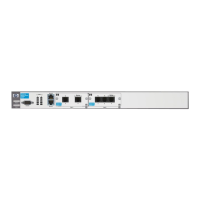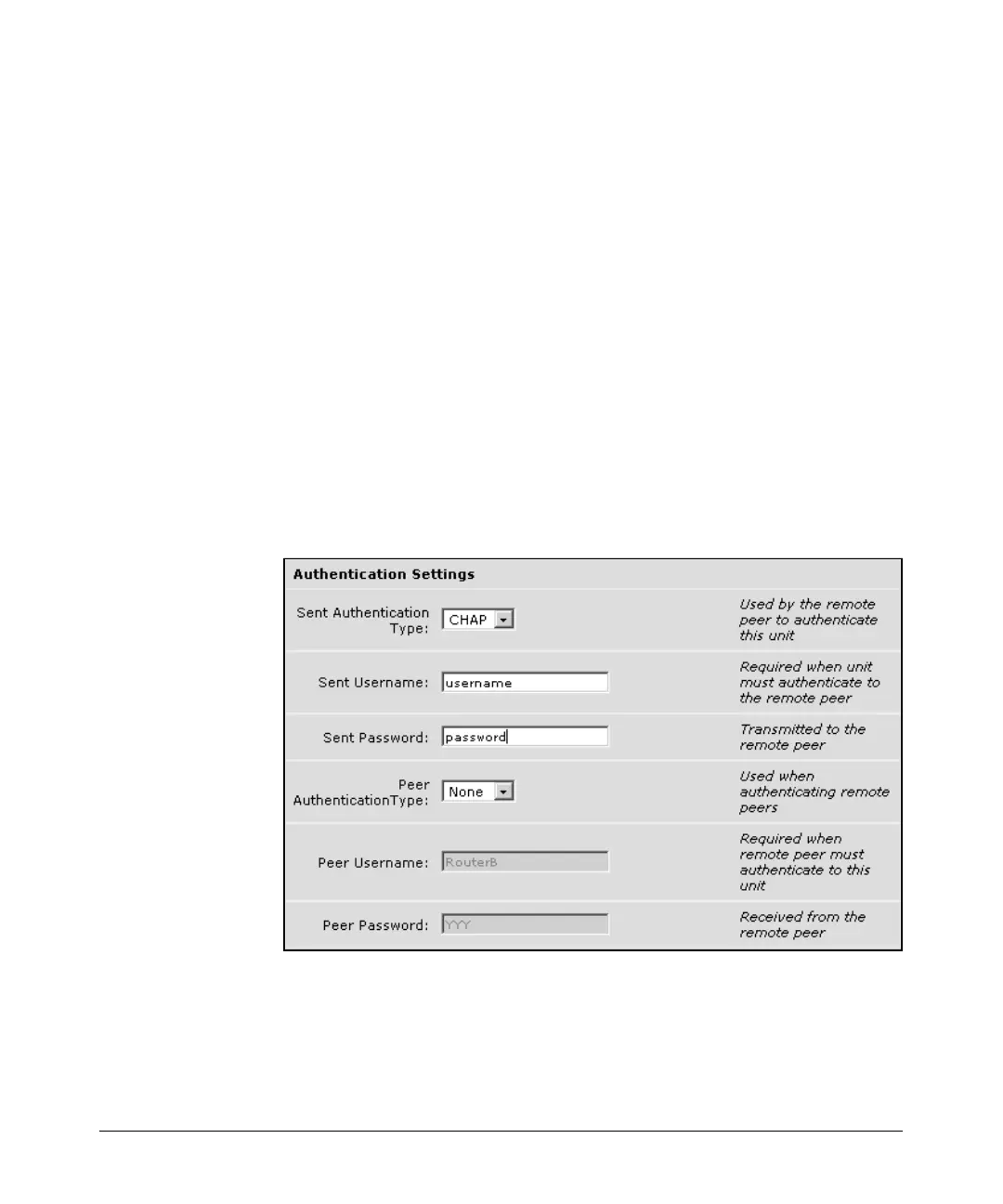14-67
Using the Web Browser Interface for Basic Configuration Tasks
Configuring the Data Link Layer Protocol for E1, T1, and Serial Interfaces
5. Enter the remote endpoint’s username and password in the Peer Username
and Peer Password fields. For example, in Figure 14-46, the peer’s user-
name is RouterB and its password is YYY. For CHAP the username should
be the peer’s hostname.
6. Click Apply.
7. You also configure the local router to authenticate itself to the peer
although this is not necessary. (See “Configuring the Local Router to
Authenticate Itself to a Peer” on page 14-67.)
Configuring the Local Router to Authenticate Itself to a Peer
1. Select System > Physical Interfaces.
2. Choose the logical interface for the connection whose remote endpoint
requires the router to authenticate itself (for example, your ISP).
3. You will enter the PPP Config window. Move to Authentication Settings
in the PPP configuration for “ppp <interface number>” window.
Figure 14-47. Configuring the Local Router to Authenticate Itself
4. In the pull-down menu for Sent Authentication Type, select PAP or CHAP.
The protocol must match that requested by the peer. If you do not know
the protocol your peer is using, you will either have to contact the peer

